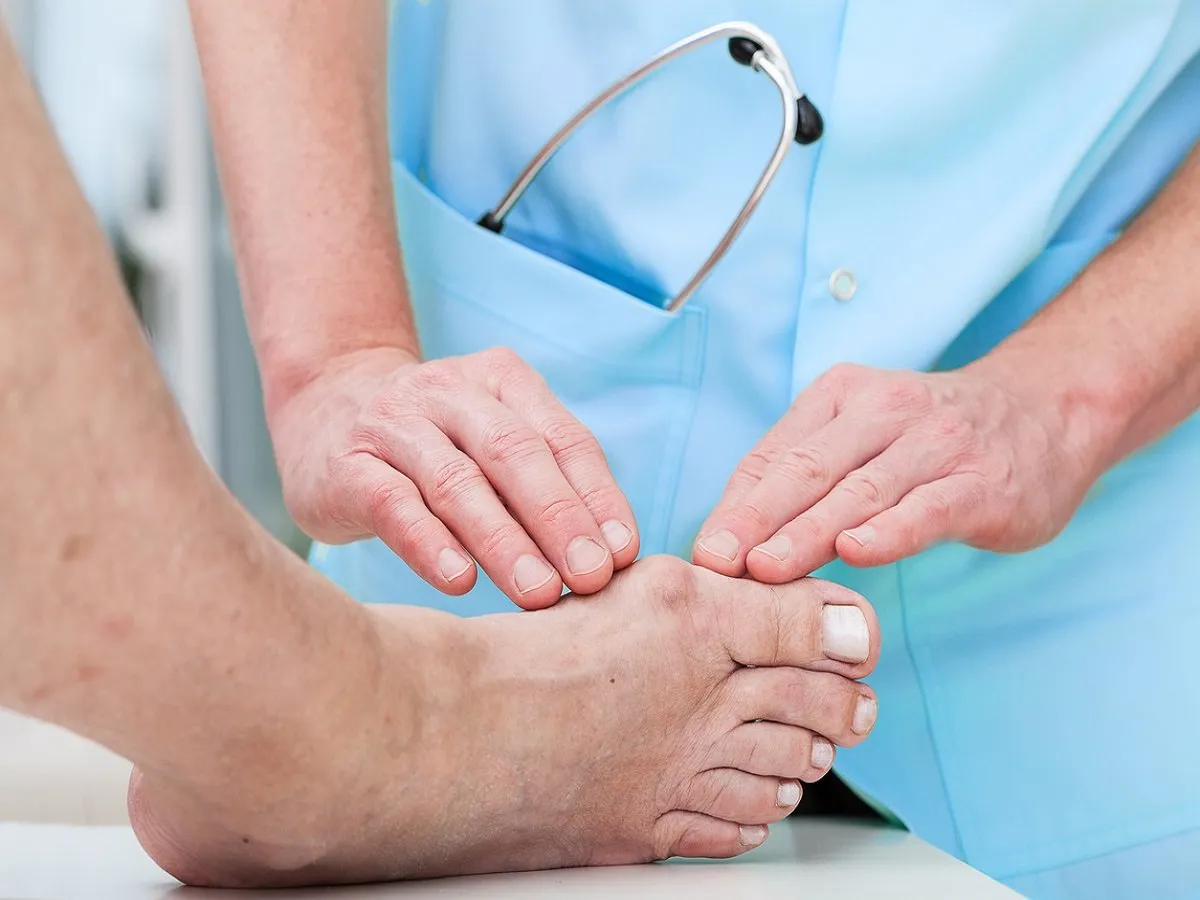Gout and bunions are two common foot conditions that can cause significant discomfort and affect daily life, yet they arise from different underlying causes and require distinct treatment approaches. Understanding the differences between gout and bunions is crucial for proper diagnosis, management, and relief of symptoms.
Understanding Gout:
Gout is a form of inflammatory arthritis characterized by sudden and severe attacks of pain, redness, swelling, and tenderness in the joints, often starting in the big toe. These symptoms occur due to the buildup of uric acid crystals in the joints, which trigger inflammation and pain. Factors that contribute to high uric acid levels and increase the risk of gout include:
Alcohol: Particularly beer and spirits, which can interfere with the body’s ability to eliminate uric acid.
Genetics: Family history of gout increases the likelihood of developing the condition.
Diagnosis and Treatment of Gout:
Diagnosing gout typically involves a combination of assessing symptoms (including sudden onset of intense pain), conducting blood tests to measure uric acid levels, and analyzing joint fluid to detect urate crystals. Treatment aims to relieve symptoms during acute attacks and prevent future episodes, and may include:
Medications: Nonsteroidal anti-inflammatory drugs (NSAIDs), colchicine, or corticosteroids to reduce inflammation and pain during attacks.
Lifestyle Changes: Dietary modifications to limit purine-rich foods and alcohol, staying hydrated, and maintaining a healthy weight.
Medications to Lower Uric Acid: Long-term medications like allopurinol or febuxostat to lower uric acid levels and prevent recurrent gout attacks.
Understanding Bunions:
It develops gradually over time due to various factors, including:
Foot Structure: Inherited foot shape or deformities that can predispose individuals to developing bunions.
Footwear: Wearing tight, narrow shoes that squeeze the toes and put pressure on the joint.
Arthritis: Certain types of arthritis, such as rheumatoid arthritis, can contribute to bunion formation.
Symptoms and Diagnosis of Bunions:
Symptoms of a bunion include a visible bump on the side of the foot at the base of the big toe, the big toe pointing towards the other toes (hallux valgus), pain or soreness around the joint, redness, inflammation, and difficulty wearing shoes comfortably. Diagnosis typically involves a physical examination by a healthcare professional and may include X-rays to assess the severity of the bunion and any joint damage.
Treatment Options for Bunions:
Treatment for bunions varies depending on the severity of symptoms and may include:
Footwear Modifications: Wearing shoes with a wider toe box and supportive soles to reduce pressure on the bunion.
Orthotics: Custom-made shoe inserts (orthotics) to redistribute pressure and correct foot alignment.
Medications: Nonsteroidal anti-inflammatory drugs (NSAIDs) or corticosteroid injections to relieve pain and inflammation.
Surgical Intervention: In cases where conservative treatments fail to provide relief or the bunion is severe, surgical correction (bunionectomy) may be recommended to realign the joint, remove the bony bump, and alleviate symptoms.
Key Differences Between Gout and Bunions:
1. Underlying Cause: Gout is caused by elevated uric acid levels and the formation of urate crystals in joints, whereas bunions develop due to pressure on the joint and foot structure abnormalities.
2. Symptoms: Gout presents with sudden, intense joint pain and inflammation during attacks, while bunions typically cause a visible bony bump and gradual discomfort around the affected joint.
3. Treatment Approach: Gout treatment focuses on reducing uric acid levels, managing acute attacks with medications, diet, and lifestyle changes. Bunions are managed with conservative measures such as footwear adjustments, orthotics, pain relief medications, and surgical intervention in severe cases.
Conclusion:
Gout and bunions are distinct foot conditions that require different approaches to diagnosis and treatment. By understanding their causes, symptoms, and treatment options, individuals can work with healthcare professionals to manage symptoms effectively, improve foot health, and maintain overall well-being. Early diagnosis and appropriate management are key to minimizing discomfort, preventing complications, and enhancing quality of life for those affected by gout or bunions.
